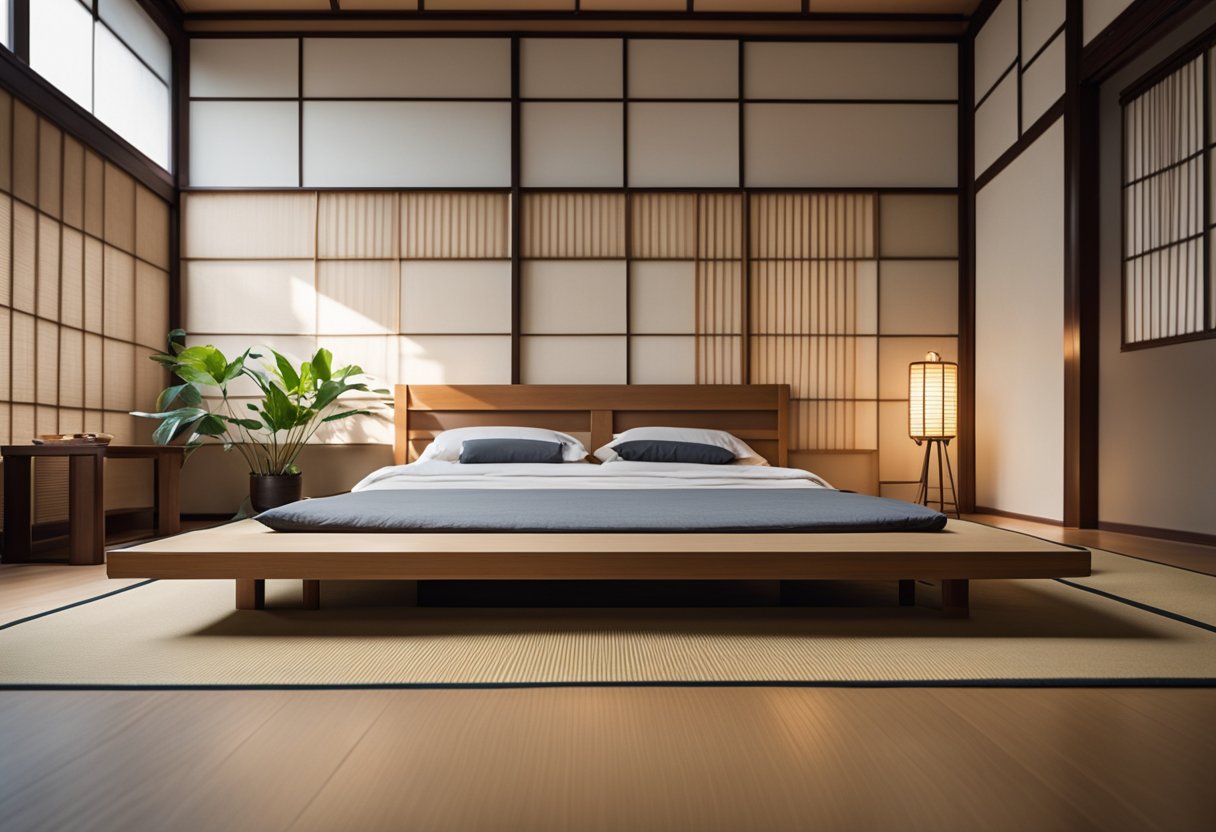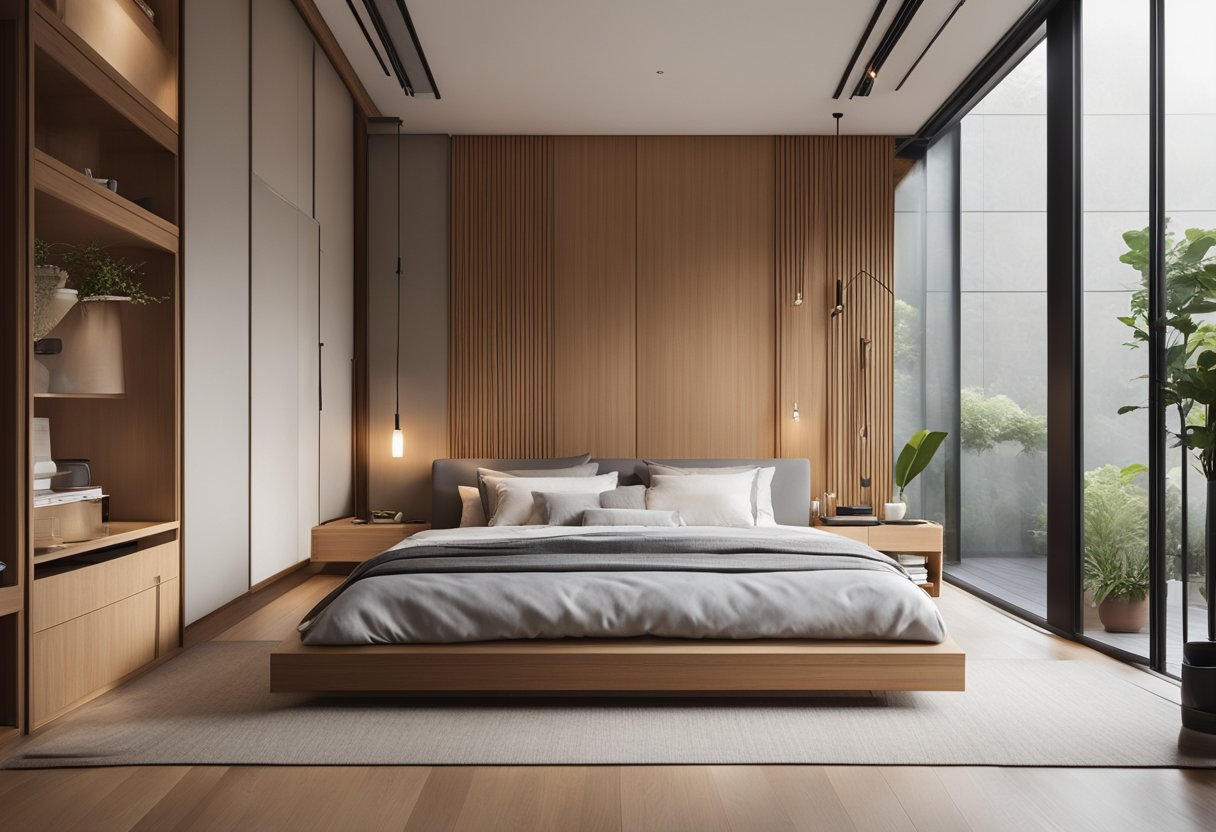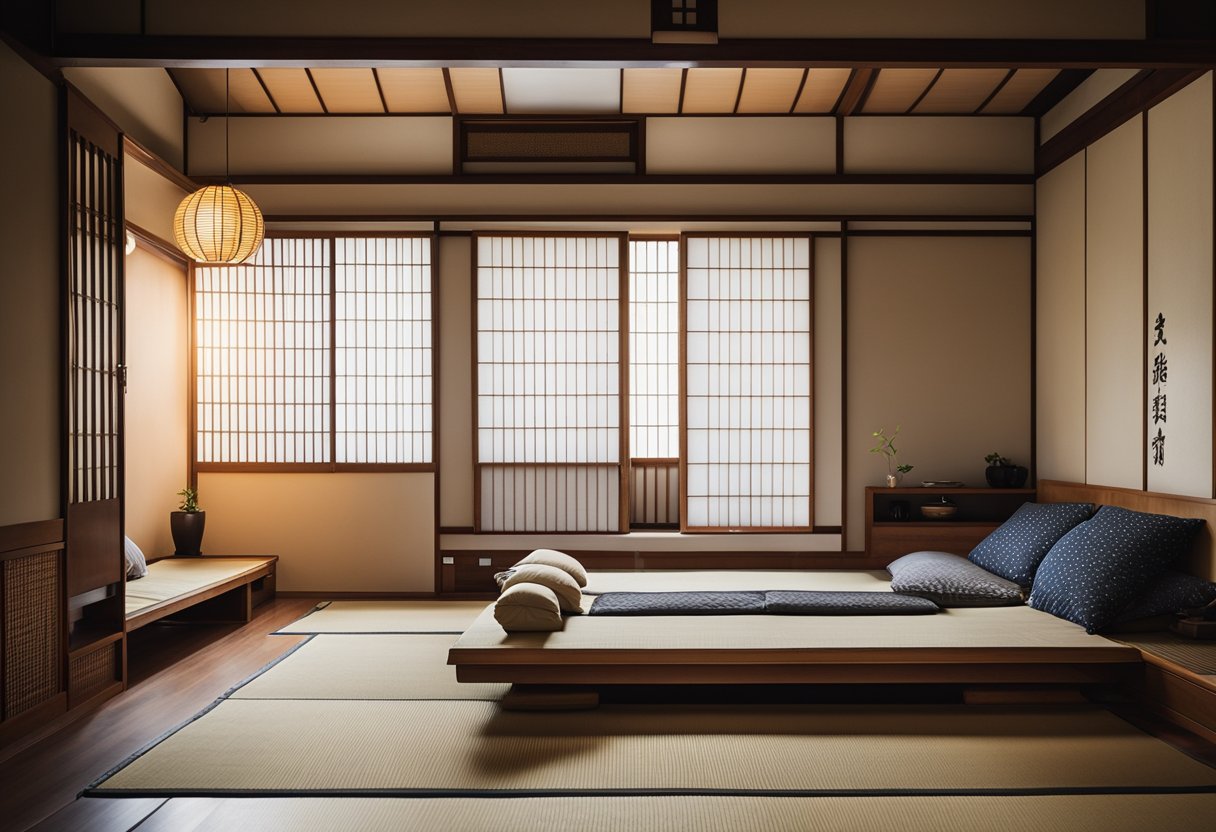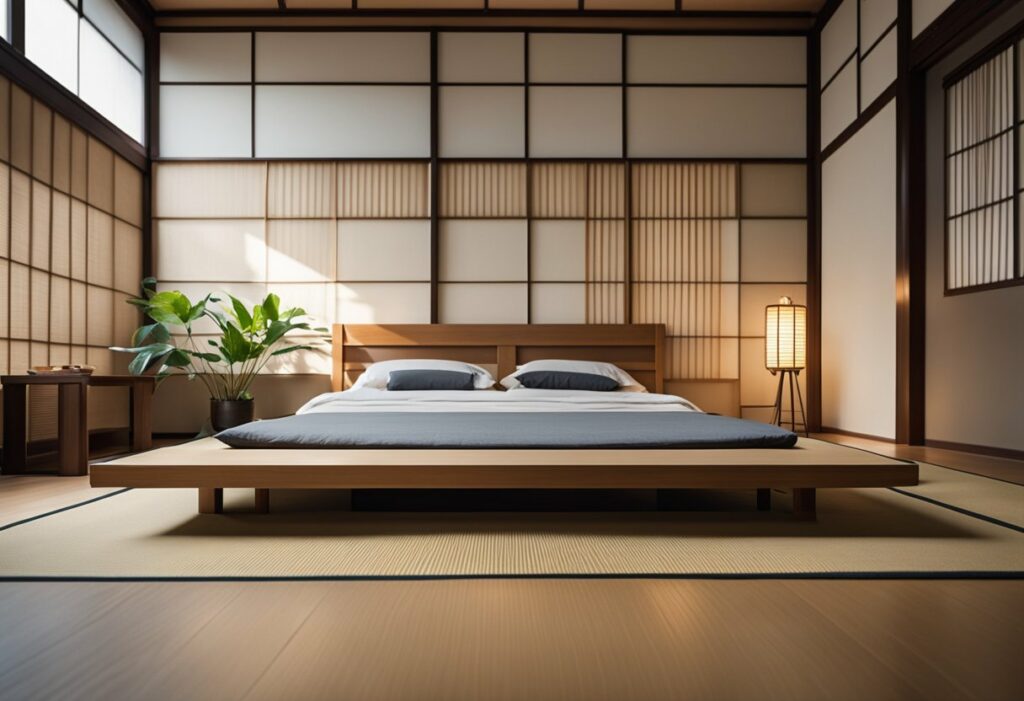Japanese Bedroom Design for Small Space: Maximising Your Room’s Potential
If you’re living in a small space, you know how challenging it can be to find practical and stylish ways to decorate your home. But with Japanese bedroom design, you can create a serene and minimalist space that maximizes every inch of your room. Japanese design principles focus on simplicity, functionality, and natural elements, making it the perfect style for small spaces.

The fundamentals of Japanese bedroom design are rooted in the concept of wabi-sabi, which embraces imperfection, asymmetry, and simplicity. This means that you don’t need to clutter your space with unnecessary furniture or decorations. Instead, focus on incorporating natural materials like wood and bamboo, and use neutral colours to create a calming atmosphere. By keeping your space simple and uncluttered, you can create a peaceful sanctuary that promotes rest and relaxation.
Maximising small spaces with Japanese design means finding clever ways to utilize every inch of your room. Consider incorporating multifunctional furniture like a platform bed with built-in storage or a low table that can double as a desk. Use sliding doors to save space and create a seamless flow between rooms. And don’t forget to incorporate plenty of natural light and greenery to create a sense of openness and tranquility. With these simple tips, you can transform your small space into a beautiful and functional Japanese-inspired oasis.
Key Takeaways
- Japanese bedroom design focuses on simplicity, functionality, and natural elements.
- Incorporating natural materials and neutral colours can create a calming atmosphere.
- Maximising small spaces with Japanese design means utilizing multifunctional furniture, sliding doors, and natural light.
Fundamentals of Japanese Bedroom Design

Embracing the essence of Japanese bedroom design for small spaces involves a harmonious blend of minimalism, natural elements, and serene ambiance.
Incorporating Minimalism and Simplicity
In Japanese interior design, less is more. By embracing minimalism, you can create a tranquil and uncluttered space. Opt for simple and functional furniture, and keep decor to a minimum. Embrace clean lines, neutral colours, and uncluttered spaces to evoke a sense of calm and simplicity.
The Role of Nature and Natural Materials
Incorporating natural materials such as wood, bamboo, and tatami mats is crucial in Japanese bedroom design. These elements bring a touch of nature indoors, fostering a serene and peaceful environment. Natural light is also pivotal, allowing the space to feel open and inviting, in line with the principles of Japanese culture and Zen aesthetics.
By integrating these fundamental aspects, you can transform your small bedroom into a tranquil sanctuary that embodies the timeless beauty of Japanese design.
Maximising Small Spaces with Japanese Design

Creating a functional and stylish bedroom in a small space can be a challenge, but with Japanese design principles, you can transform your cramped bedroom into a serene haven. Japanese bedroom design for small spaces focuses on simplicity, functionality, and minimalism. Here are some tips to help you maximise your small space with Japanese design.
Smart Storage Solutions
One of the key principles of Japanese design is decluttering. To achieve a clutter-free space, you need to have smart storage solutions. Consider incorporating built-in storage, such as shelves or cabinets, into your bedroom design. You can also use furniture that doubles as storage, such as a bed with built-in drawers or a storage ottoman.
Another great storage solution is to use vertical space. Install shelves or hanging racks on the walls to store items such as clothing, books, or decorative items. This will free up valuable floor space and make your room feel more open.
Strategic Furniture Selection
When selecting furniture for your small space, it’s important to choose pieces that are functional and space-saving. Japanese furniture is known for its simplicity and functionality, making it a great choice for small spaces. Consider using a traditional futon bed instead of a bulky bed frame and mattress. A futon can be easily folded up and stored away when not in use, freeing up valuable floor space.
Another great piece of Japanese furniture for small spaces is the shoji screen. These sliding screens can be used to divide a room or create privacy, and they take up very little space. You can also use a shoji screen as a headboard for your bed, creating a beautiful and functional focal point in your bedroom.
In conclusion, Japanese bedroom design for small spaces is all about simplicity, functionality, and minimalism. By incorporating smart storage solutions and strategic furniture selection, you can maximise your small space and create a serene and stylish bedroom.
Frequently Asked Questions

What are the top tips for creating a minimalist Japanese-inspired bedroom in a compact space?
When it comes to creating a minimalist Japanese-inspired bedroom in a small space, the key is to keep things simple. Start by choosing a low platform bed and incorporating tatami flooring, which are traditional Japanese elements that will help to create an authentic feel. Use shoji screens for windows to bring in natural light and create a sense of openness. Finally, keep furniture to a minimum and opt for sleek, simple designs that won’t take up too much space.
How can you maximise storage in a small bedroom while maintaining a Japanese aesthetic?
In a small bedroom, storage is key, but you don’t want to clutter up the space with bulky furniture. To maximise storage while maintaining a Japanese aesthetic, consider built-in storage solutions such as a platform bed with drawers underneath or a built-in wardrobe. You can also use floating shelves or wall-mounted cabinets to keep items off the floor and create more space.
What are the essential elements to include in a modern Japanese style bedroom?
A modern Japanese style bedroom should include a low platform bed, tatami flooring, shoji screens for windows, and minimalist furniture. You can also incorporate traditional Japanese artworks, paper screens, and sliding doors into your design to create a space that truly embraces the cultural heritage and aesthetics of Japan.
How do you incorporate traditional Japanese design into a small bedroom layout?
Incorporating traditional Japanese design into a small bedroom layout can be challenging, but it’s not impossible. Start by choosing traditional Japanese elements such as tatami flooring and shoji screens for windows. You can also incorporate traditional Japanese artworks and sliding doors into your design. Finally, keep furniture to a minimum and opt for sleek, simple designs that won’t take up too much space.
What colour schemes best capture the serenity of Japanese design for a small bedroom?
When it comes to choosing colours for a small bedroom with a Japanese design, it’s best to stick to a neutral palette. Think shades of white, beige, and grey, which will create a sense of calm and serenity. You can also incorporate natural materials such as wood and bamboo to add warmth and texture to the space.
How can one achieve a Japanese minimalist living room in a limited space?
To achieve a Japanese minimalist living room in a limited space, start by choosing a low, minimalist sofa or seating arrangement. Use shoji screens or sliding doors to create separation between different areas of the room. Finally, keep furniture to a minimum and opt for sleek, simple designs that won’t take up too much space.



